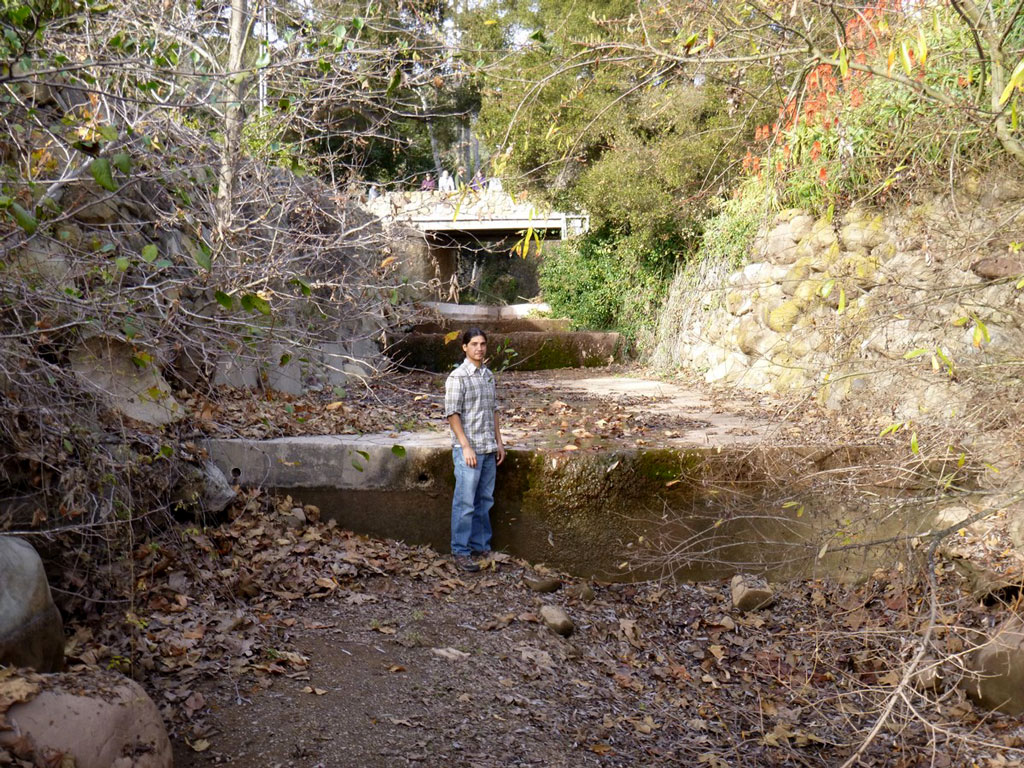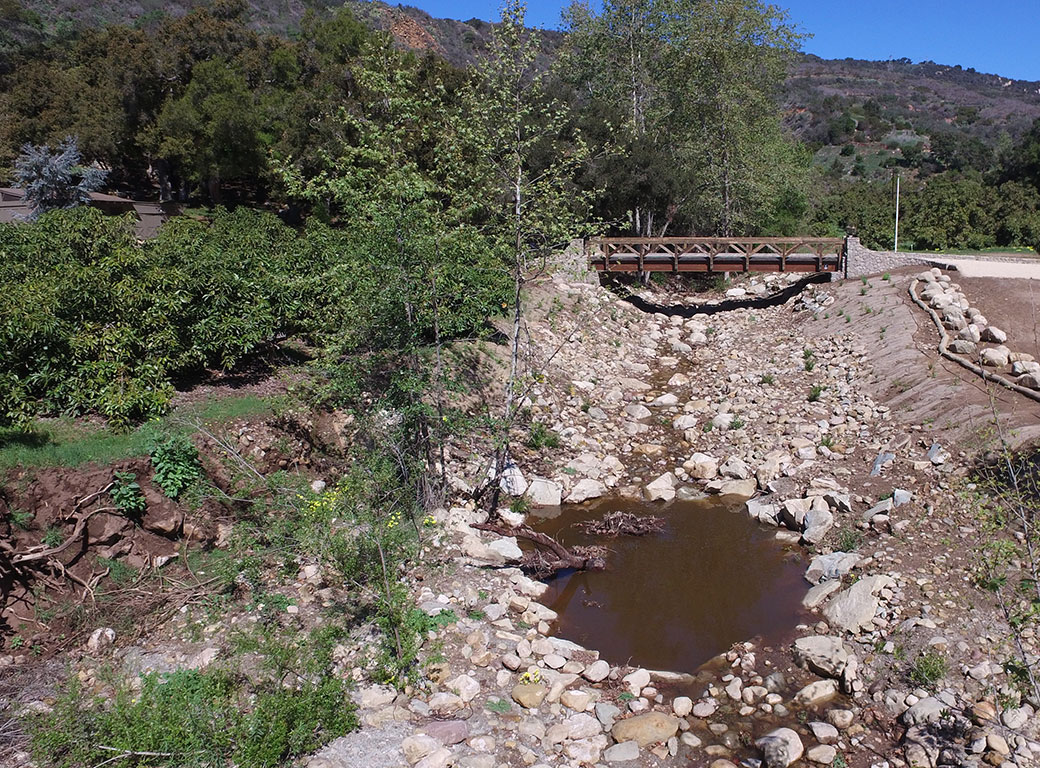
BEFORE: Concrete obstructions and an undersized bridge prevented fish migration.

AFTER: With winter rains, a new free-span bridge and restored creek bed will allow fish to access rare spawning and rearing habitat upstream.
- ☑ California Department of Fish and Wildlife
- ☑ California Coastal Commission
- ☑ State Water Resources Control Board
- ☑ NOAA (National Oceanic and Atmospheric Administration) Fisheries for the entire California coast
- ☐ NOAA Fisheries for the entire Central Valley
- ☐ U.S. Army Corps of Engineers
- ☐ U.S. Fish and Wildlife Service
-
“Restoration is needed now – not years from now.”
The time to restore habitat for California’s imperiled wildlife is today – or yesterday. More than 350 of our Golden State species are threatened or endangered, with little opportunity left to rebound. The more quickly we can act to help save them, the better.
2015 brought to life Sustainable Conservation’s Habitat Restoration and Enhancement Act – legislation that delivers precious time and a real chance at recovery back for struggling species. The Act simplifies the permitting process with the California Department of Fish and Wildlife (CDFW) across the entire state to implement much-needed restoration projects – thereby improving wildlife habitat, urban watersheds, and coastal water quality.
By supporting Sustainable Conservation, you support California landowners in stewarding our collective lands and water. With the CDFW program up and running, we checked off yet another box along the way to securing simplified permits with all state and federal agencies with jurisdiction over restoration activities. Thank you!
-
“We can have a regulatory environment that protects our environment and allows projects to move forward.”
With the completion of the first project approved under the Act, our progress was concrete – literally! Our partners at South Coast Habitat Restoration removed a concrete-lined section of Carpinteria Creek, an undersized bridge that constricted streamflow, and several large concrete steps in the channel – all of which blocked endangered Southern California steelhead from reaching spawning and rearing habitat upstream.
While these formidable obstructions to steelhead passage had been in place for over 60 years, approval for remediation efforts through the Act took only two months. In the past, approval timelines were much more uncertain, taking anywhere from several months up to an entire year. Restoration projects that meet environmental regulations can now be fast-tracked to more quickly benefit California’s land, air, and water.
On this unique stretch of Carpinteria Creek, a natural rock-and-cobble stream gradient and new bridge now help protect the local steelhead population, as well as allow storm flows to pass safely and improve landowner access to the property.
-
“The most important variable is trust.”
Thanks to the Sustainable Conservation-sponsored legislation you helped make possible, California landowners, our restoration partners, and public land managers alike can now turn to CDFW for expedited approval of beneficial restoration projects.
The more members of California’s conservation community who make use of this partnership, the merrier! To ensure widespread use of the simplified process, we’re actively reaching out to parks, land trusts, farmers, ranchers, and many others. Sustainable Conservation staff have also provided technical information and assistance to agency regional staff and more than 40 restoration proponents, and spread the word at conferences statewide.
-
“I have an eight-year-old son and one of the things that I’ve tried to teach him over the years is you always put things back to where you [found] them.”
The Carpinteria Creek project removed the final barrier to steelhead migration in this important South Coast watershed that flows from headwaters in the Los Padres National Forest to the sea a few miles south of Santa Barbara. Native migratory fish will now be able to navigate home from the ocean, back to their freshwater origins to spawn and nurture a new generation.
Time remains of the essence. Thank you for uniting with us to build another hopeful link in the chain of survival for California’s fish and wildlife.
